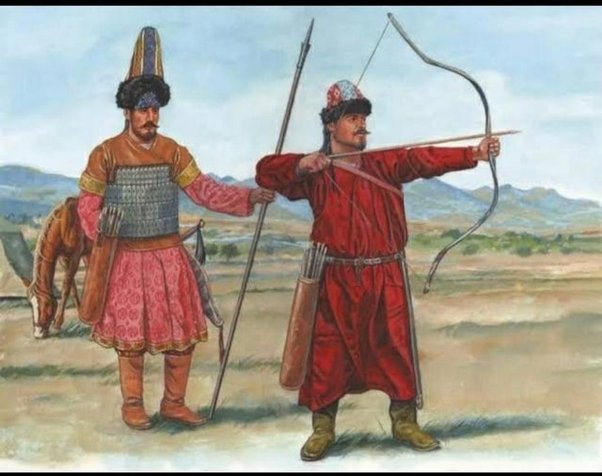Don't know its name(s) in Turkic/Russian/Mongolian.
In Arab culture, the version of this conical hat with brim is called: "sarāqūj". Used by Mamluk military and believed to originate from Central Asia.
Another hat that seems to have been popular during the Mamluk
era was the sarāqūj. It was a high, pointed, conical hat of Central
Asian origin with a brim that most frequently was turned up, but
also could be turned down. The sarāqūj was usually white or a light
tan. It could also be two-toned, with a light brim and a colored
crown. The point of the conical crown could be plain or have a
decorative metallic knob, pointed plaquette, tuft, or long plumes
extending from it. The cone could be simple or paneled in vertical
sections ...
From Arab Dress. A Short History - From the Dawn of Islam to Modern Times (2003), p.68.
Another source is Armies and Enemies of the Crusades 1096-1291
by Ian Heath:

Finally, it is a distinctive Mongol headgear of some elite status because Hülegü (Il-Khanid) presented a sarāqūj to a prisoner they rescued.
The context for this is provided by the Syrian scholar al-Yūnīnī, who relates that al-Saʿīd Ḥasan had been imprisoned by al-Nāṣir Yūsuf, the leading Ayyūbid in Syria, in the castle of al-Bīra, a major crossing point of the Euphrates. When the Mongols passed through, they had released him, and as a sign of great honour, Hülegü himself had presented him with Mongol clothing – a brocade mantle and a hat (qabāʾ zarbaft wa sarāqūj) – which from then on he always wore.
From p.140 - STEWART, A. (2016). If the Cap Fits: Going Mongol in Thirteenth Century Syria. Journal of the Royal Asiatic Society, 26(1-2), 137-146. doi:10.1017/S1356186315000887






